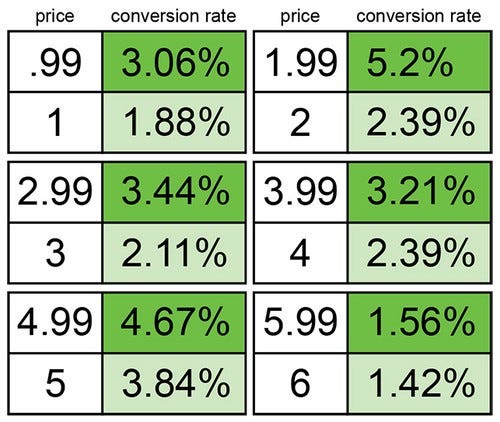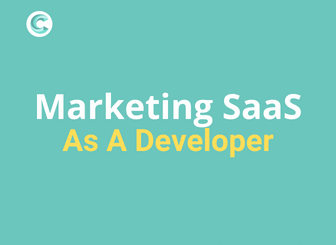To achieve my first MRR in my Micro SaaS product, I need to find a balanced pricing strategy for microSaaS and my customers (X)
According to Ryan Law — “Finding the right balance between value and revenue — your ability to help customers and be fairly compensated for that help — will make or break your SaaS company.”
My pricing strategy is simple, use the factors listed below to determine the Y amount for X customers every month to achieve my first Z MRR (Monthly Recurring Revenue).
In this story, I will explore 3 pricing strategies I want to use to achieve Y and in the next story, I will explain how to combine X and Y to achieve Z.
Introduction
If you’re just joining my storytime series, Welcome. I’m talking about building a micro SaaS app called Contentre as a solo developer.
Contentre is a central place for all your content. You can manage all your content from one place.
It helps freelance writers (content creators) organize their content, manage clients, create multiple portfolios, discover new opportunities, and lots more, all in one place.
Check out how it all started here:
How I Built My Tech Startup As a Solo Developer
Also, check out my previous story where I explained how to market Contentre and find my first X (customers).
Marketing a SaaS Product as a Solo Developer
Now that you’ve all caught up, let’s dive into solving the puzzle of pricing for my micro SaaS.
Determining a balanced pricing strategy and model depends on different factors and sometimes personal convictions but nevertheless. It is broken down into 3 main factors, viz:
- The pricing model
- The pricing strategy
- The psychological tactics
It might sound familiar already but you can read more on the SaaS pricing model. However, in other to determine my pricing strategy to achieve my goal. I will pick a more suitable plan from each of these factors.
jordan 4 reps
rep jordan 4
jordan 4 replica
jordan 4 reps
jordan reps cheap
jordans reps
air jordan reps
jordan 4 reps cheap
jordan 1 reps
off white replica
replica off white
fake kobes
kobe reps
balenciaga track reps
jordan 4 reps
yeezy slides reps
yeezy slide reps cheap
jordan 4 reps
foam runner reps
rep foam runners
reps shoes cheap
size 14 reps
The Pricing Model
The pricing model helps us determine the type of price we should offer to our customers based on the value our product provides.
It answers questions such as should the price be a flat rate, a one-time fee, should the product be free, usage-based, or even a tiered pricing model?
According to Ryan Law — “Your pricing model is at the heart of your SaaS business. It’s the foundation that allows you to build out repeatable sales processes and generate recurring revenue.”
After much research, I decided to test out two interesting models, viz:
- Freemium pricing model
- Tiered pricing model
Freemium Pricing Model
We will offer a section of our product to our customers for free and then supplement it with a paid plan with a higher quota and features.
Tiered Pricing Model
The tiered pricing model is the supplement to our freemium plan where I will offer some advanced features and a higher quota to my customer as a paid plan.
The model is a combination of flat-rate and usage-based pricing models. It is also a good way to say: “The more you use the more you pay”.
Next, I’m going to explore the pricing strategy I will be using on my Micro SaaS product.
The Pricing Strategy
Determining the best pricing strategy for your SaaS product is not an easy journey, it requires a series of AB testing and feedback from the actual users.
However, your pricing strategy should answer the following questions, should you offer my customers a free trial, lower the price below market price, or give a promotional price? 🤔
The pricing strategy I intend to use is simple: Offer a free trial of our advanced features to our freemium users.
Obviously, this strategy has its advantages and disadvantages but since I’m currently testing out this model and strategy.
I might have to change it in the future depending on the result of my test or feedback from customers.
Lastly, I will explore the psychological tactics I intend to use to convert our users to paying customers.
The Psychological Tactics
While your pricing model and strategy are the main cake, the psychological tactics are like the icing on the cake. These tactics are those smaller experiments that can be used to fine-tune and optimize your pricing.
Obviously, there are lots of psychological tactics you could use to convert leads to paying customers depending on your micro SaaS product and team domain knowledge.
There are many psychological tactics you can use from this SaaS psychological tactics but I will stick with a combination of two tactics that resonates with my micro SaaS product.
- Charm Pricing
- Odd-Even Pricing
Charm Pricing
The charm pricing tactics refer to the use of pricing that ends in the number nine. For example $9.99 instead of $10, $14.99 instead of $15, or $49.99 instead of $50.
According to the experiment conducted by Gumroad below. You can see the conversion rate between charm pricing and normal pricing.

Odd-Even Pricing
Odd-even pricing works on a similar principle to charm pricing: prices are reduced by a few dollars to bring them just under the nearest “rounded” price point.
While the charm pricing uses numbers ending with 9, odd-even pricing uses numbers ending in either odd or even numbers. For example $9.47 instead of $9.99, $14.57 instead of $14.99, or $49 instead of $49.99.
With the combination of these tactics, I will generate a balanced price for my micro SaaS product.
Summary
Coming up with a suitable or best pricing strategy, models, and tactics for micro SaaS can be daunting. However, it requires a lot of testing, iterating, and feedback from users to determine a balanced price for both your customers and the value you offer.
So don’t be in a rush to settle for a particular pricing model, strategy, or tactic iterate, fail and fail forward.
With that said, the above pricing strategies, models, and psychological tactics I have chosen for my product are still under testing. It might change in the future depending on the result of the test and my customer’s feedback.
Anyways, that is my pricing strategy to find Y in my equation. Now that I know how to find X(Customers) and Y(Pricing). How will I combine X and Y to generate my first Z(Monthly Recurring Revenue)? Or what will the actual values for X, Y, and Z be? 🤔🤔
Are you curious?
In my next story, I will show you the actual values for X, Y, and Z and how to combine all these variables to achieve my first MRR(Monthly Recurring Revenue).
You don’t want to miss the grand finale 😁, Follow me now.
Nevertheless, I hope you learned a thing or two. Let me know in the comment section above, and clap for this article for others to benefit.
Contentre is a central place for all your content. You can manage all your content from one place.
It helps freelance writers (content creators) organize their content, manage clients, create multiple portfolios, discover new opportunities, and lots more, all in one place.
Contentre helps technical writers stay organized and gain more clients. Grow your technical writing career in one place.
Now that you’re here, let me briefly recap the most important features Contentre can offer you:
- Organize your content in categories, topics, and tags
- Create and manage multiple clients
- Create and manage multiple personalized portfolios
- Get statistical analytics of your content revenue, top categories, and tags.








3 Comments
I recently came across your blog and have been reading along. I thought I would leave my very first remark. Nice blog. I will keep visiting this blog very often. I really have to say thanks
Youre so right. Im there with you. Your blog is absolutely worth a read if anyone comes across it. Im lucky I did because now Ive obtained a whole new view of this. I didnt realise that this issue was so important and so universal. You undoubtedly put it in perspective for me.
Im a huge fan already, man. Youve done a brilliant job making sure that people understand where youre approaching from. And let me tell you, I get it. huge stuff and I cant wait to read more of your blogs. What youve got to say is important and needs to be read.